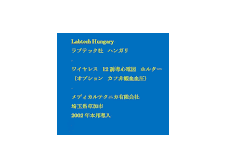Neural Control of
Vascular Reactions: Impact of Emotion and Attention
Hadas Okon-Singer, Jan Mehnert, Jana Hoyer, Lydia
Hellrung, Herma Lina Schaare, Juergen Dukart and Arno Villringer
Journal of Neuroscience 19 March 2014, 34 (12) 4251-4259;
DOI: https://doi.org/10.1523/JNEUROSCI.0747-13.2014
Abstract
This study investigated the neural regions involved in blood pressure
reactions to negative stimuli and their possible modulation by attention.
Twenty-four healthy human subjects (11 females; age = 24.75 ± 2.49 years)
participated in an affective perceptual load task that manipulated attention to
negative/neutral distractor pictures. fMRI data were collected simultaneously
with continuous recording of peripheral arterial blood pressure(CareTaker 、Emperical Technologies);. A parametric
modulation analysis examined the impact of attention and emotion on the
relation between neural activation and blood pressure reactivity during the
task. When attention was available for processing the distractor pictures,
negative pictures resulted in behavioral interference, neural activation in
brain regions previously related to emotion, a transient decrease of blood
pressure, and a positive correlation between blood pressure response and
activation in a network including prefrontal and parietal regions, the
amygdala, caudate, and mid-brain. These effects were modulated by attention;
behavioral and neural responses to highly negative distractor pictures
(compared with neutral pictures) were smaller or diminished, as was the
negative blood pressure response when the central task involved high perceptual
load. Furthermore, comparing high and low load revealed enhanced activation in
frontoparietal regions implicated in attention control. Our results fit
theories emphasizing the role of attention in the control of behavioral and neural
reactions to irrelevant emotional distracting information. Our findings
furthermore extend the function of attention to the control of autonomous
reactions associated with negative emotions by showing altered blood pressure
reactions to emotional stimuli, the latter being of potential clinical
relevance.




















